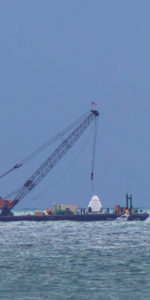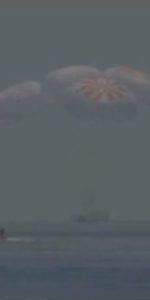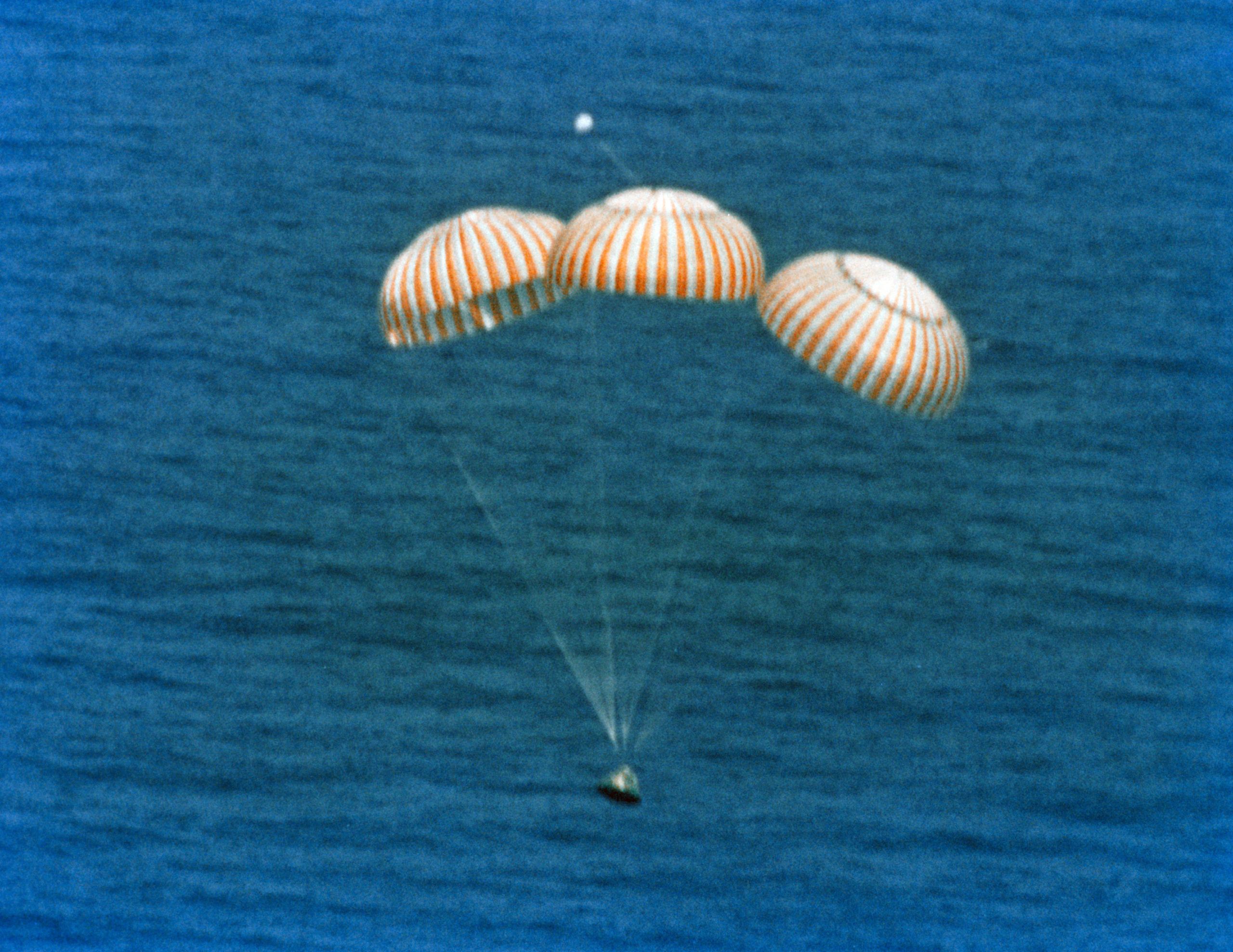
Tomorrow afternoon, Dragon Endeavour crewmen Doug Hurley and Bob Behnken will wrap up a hugely successful eight-week voyage to the International Space Station (ISS) by becoming the first U.S. astronauts to land in the ocean since the end of the Apollo-Soyuz Test Project (ASTP) on 24 July 1975. At the time of writing, the pair are scheduled to undock from the station tonight, with splashdown expected in the Atlantic Ocean around mid-afternoon Sunday. Launched on 30 May atop a SpaceX Falcon 9 booster, Hurley and Behnken will become the 32nd crew of Americans to return from space in this fashion. All astronauts in the intervening years have landed on terra firma either aboard the now-retired Space Shuttle—as Hurley and Behnken did earlier in their careers—or aboard Russia’s Soyuz. In this second look-back at the history of oceanic landings, AmericaSpace focuses today upon Apollo, whose astronauts returned to Earth faster, hotter and from greater distances than any of their Mercury or Gemini predecessors.
As outlined in yesterday’s AmericaSpace history article, six Mercury missions returned to the waters of the Atlantic or Pacific Oceans between May 1961 and May 1963 and demonstrated the hazards involved, with one astronaut losing his spacecraft and almost drowning and another overshooting his landing point by more than 250 miles (400 km) and leaving an anxious world wondering about his fate. And ten Gemini crews, launched between March 1965 and November 1966, saw astronauts lose a corned-beef-sandwich breakfast, exhibit unpleasantly “unique” aromas after many days in space and endure 20-foot-high (7-meter) oceanic swells.
Between October 1968 and July 1975, a further 15 crews of astronauts plummeted to Earth and splashed down in either the Atlantic or Pacific Ocean to wrap up some of our species’ most spectacular space voyages. Nine of them did so returning from the Moon, three from an Earth-circling space station and one from a joint mission with the Soviet Union. But first among them, on 22 October 1968, was the return of Apollo 7 crewmen Wally Schirra, Donn Eisele and Walt Cunningham after 11 days in orbit. Gusty winds and choppy waves at their splashdown point, just to the south-east of Bermuda, caused the command module to enter an invested orientation, but its flotation bags quickly righted it. Apollo 7 had hit its landing target with near-pinpoint precision, only 2.2 miles (3.5 km) from where it was supposed to be and a mere 8 miles (13 km) from the recovery ship, the aircraft carrier Essex.
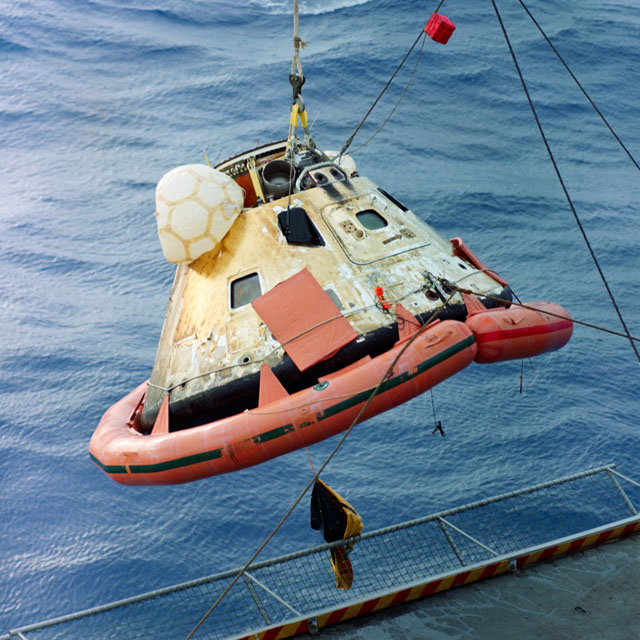
Two months later, on 27 December, Apollo 8 astronauts Frank Borman, Jim Lovell and Bill Anders returned from the first human voyage to lunar orbit and their re-entry speed was correspondingly more intense at 21,685 mph (34,900 km/h). They splashed down in the pre-dawn darkness of the Pacific after a historic mission, although it was slightly less dignified for the crew, who got themselves drenched with sea-water, thanks to an open vent in the command module. At one point, Anders even wondered if Apollo 8’s hull had cracked. Borman, an Air Force pilot, was seasick as a result and Lovell and Anders showed no mercy. “What do you expect from a West Point ground-pounder?” they joked.
The splashdown of Apollo 9 crewmen Jim McDivitt, Dave Scott and Rusty Schweickart on 13 March 1969, after a ten-day test mission in Earth orbit, occurred within sight of the recovery ship, but offered the astronauts a rough experience at sea. Television cameras aboard the Guadalcanal saw the three men tumbling into inflated rubber life-rafts and the severe oceanic swells—whipped up to a fury by the rotors of the recovery helicopter—caused the cage-like swing meant to haul them to safety to miss its target several times. “When Scott was finally able to hitch a ride after ten misses,” Time reported later, “the cage swung widely back and forth in stomach-churning arcs as it was lifted to the helicopter.” His hapless crewmates were scarcely more fortunate. McDivitt had to seek refuge on Apollo 9’s flotation collar when the wind roared across his life-raft. All three men were safely recovered, but not before earning themselves a thorough soaking and a dizzying spin.
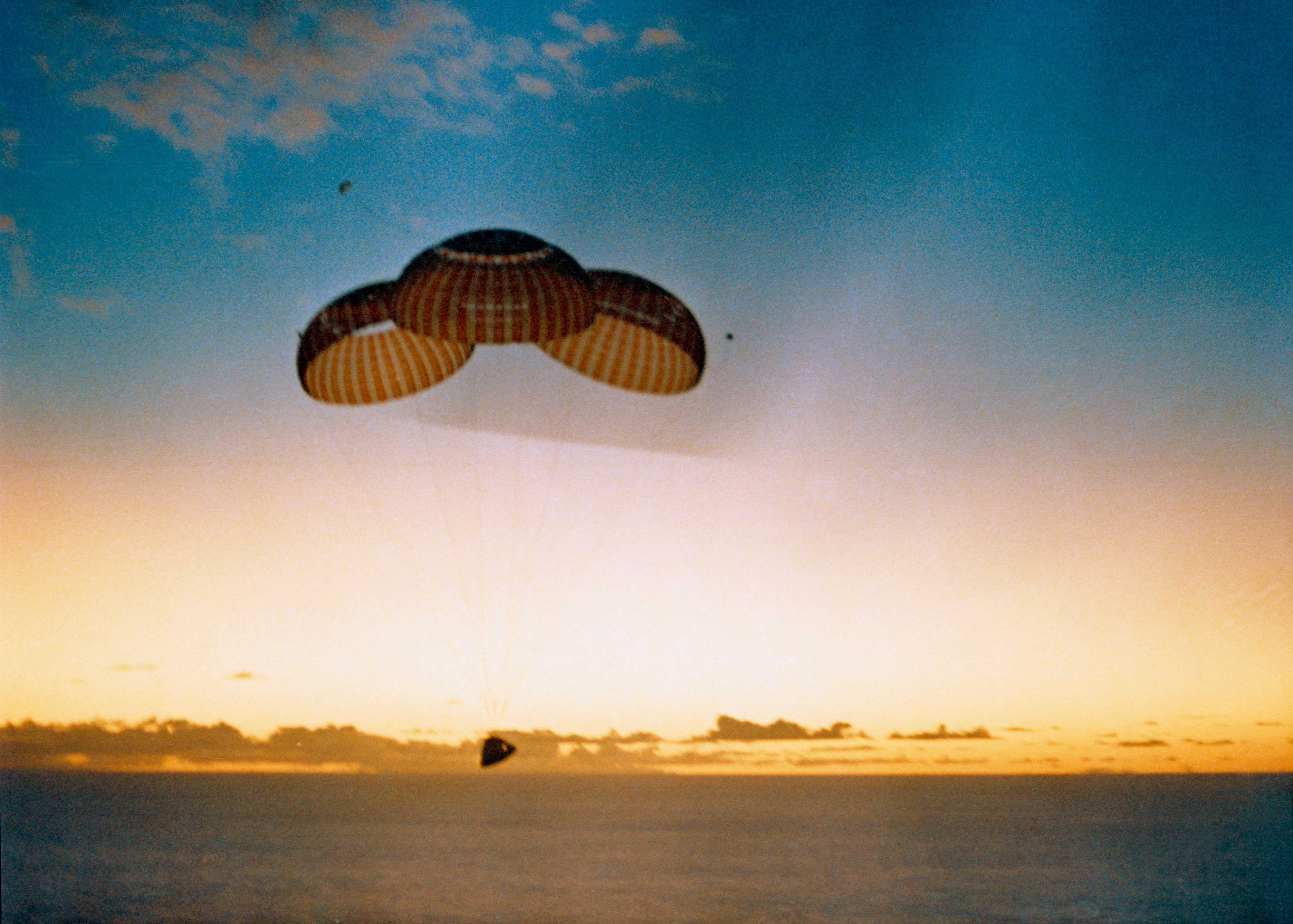
With an astronaut corps comprising sea-hardened naval veterans, civilians and Air Force pilots, it is little surprise that successive Apollo crews had their own experiences of splashing down in the ocean. Returning from Apollo 11—the first manned lunar landing mission—in July 1969, the command module hit the water like a ton of bricks and swells off the Hawaiian coast quickly dragged it into an inverted position, with Neil Armstrong, Mike Collins and Buzz Aldrin hanging uncomfortably from their harnesses. They inflated airbags on their ship’s nose, which turned them upright, but Air Force pilot Aldrin appears to have suffered the worst in terms of nausea. And Collins lost a bet with Armstrong that their command module would not capsize…
All three returning lunar heroes waited for recovery personnel to reach them, silently willing themselves not to succumb to seasickness. With the recovery ship Hornet only 12 miles (20 km) steaming towards them—carrying President Richard Nixon to welcome them home—the possibility was unthinkable. “It was one thing to land upside down,” Aldrin reflected, years later. “It would be quite another to scramble out of the spacecraft in front of the television cameras, tossing our cookies all over the place!”
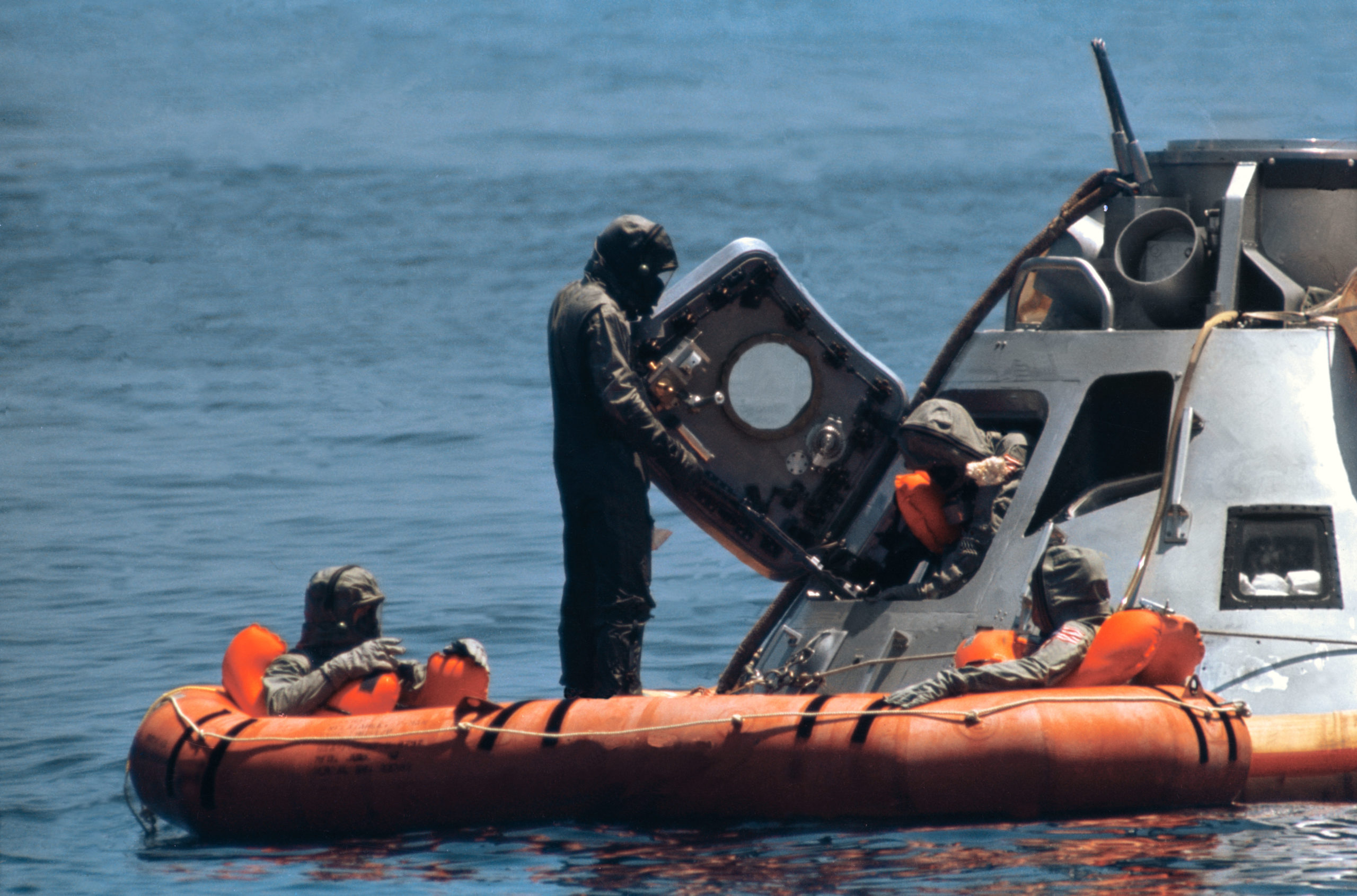
Nine months later, after a traumatic six days in space, the returning crew of Apollo 13 afforded their watching and listening terrestrial audience an added scare as their command module completed its perilous descent back through the atmosphere. Marine Corps helicopters scoured the targeted landing spot in the Pacific, but could see nothing, and it was actually the Apollo Range Instrumentation Aircraft (ARIA)—a modified Boeing EC-135—whose powerful telemetry and tracking gear picked up the rapidly descending spacecraft.
After a week in which almost everything on Apollo 13 had gone wrong, the joy of witnessing the command module’s parachutes opening and Jim Lovell, Jack Swigert and Fred Haise splashing safely into the ocean proved a smooth and graceful charm.
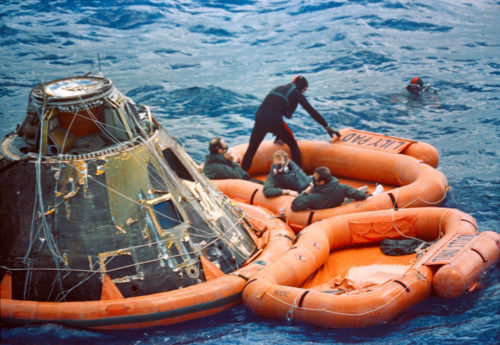
Others were less fortunate. On 7 August 1971, Apollo 15 crewmen Dave Scott, Jim Irwin and Al Worden returned from perhaps the most scientifically spectacular lunar landing mission of the entire program. Unfortunately, one of the command module’s three main parachutes refused to deploy.
“The drogue chutes came out at 25,000 feet,” Irwin remembered in his memoir, To Rule the Night, “and that really slowed us down, just like a drag chute or speed brakes in an airplane. It doesn’t jerk you, it brakes you. Then you start oscillating wildly underneath the drogues. Just before you get to 10,000 feet, the drogues are released. You can see up there; you see them go, and then you feel them go. You free-fall for a few seconds, wondering whether the main chutes are going to come out. At 10,000 feet, the main chutes are out and they slow you almost completely.”
But not quite.
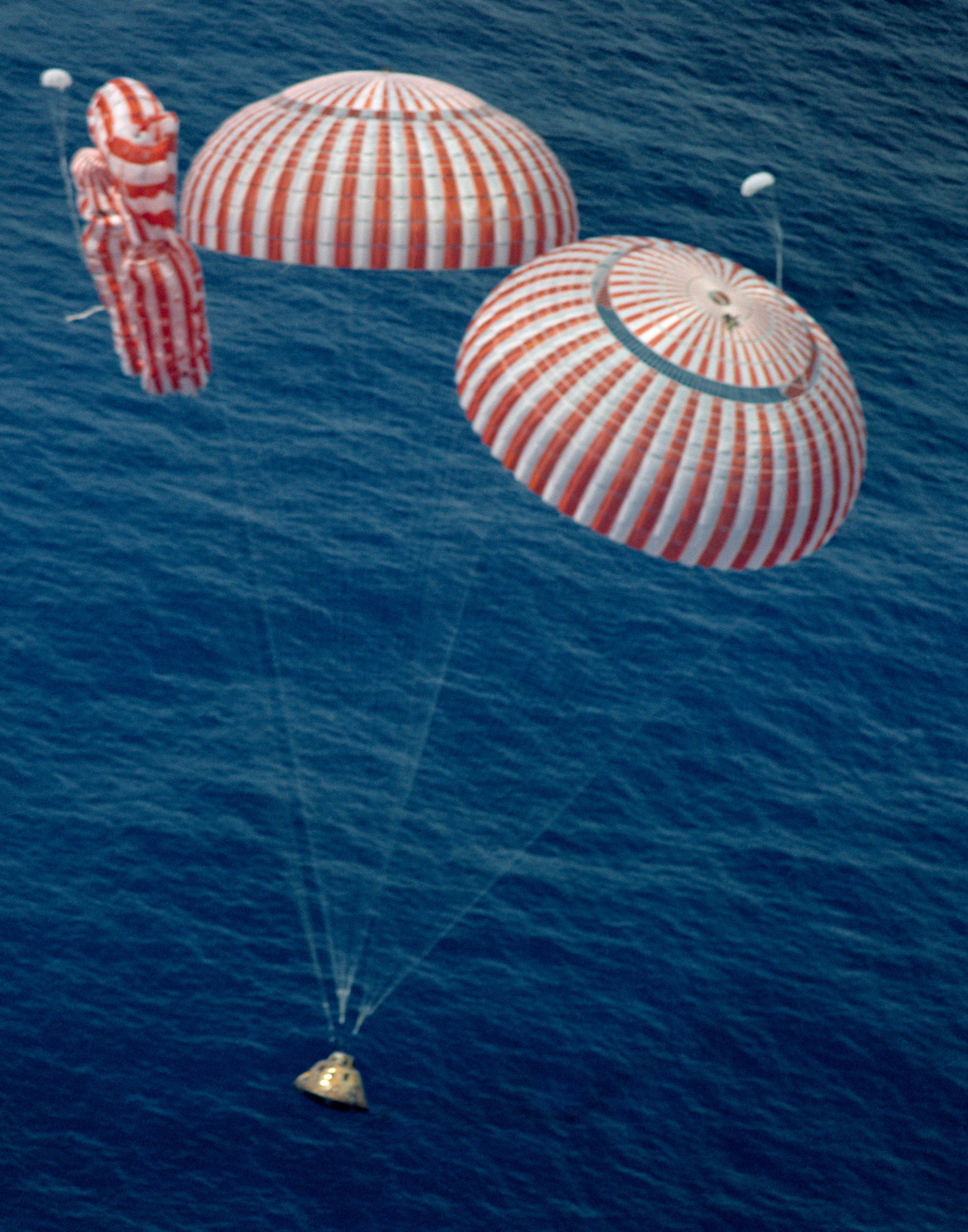
“We saw three chutes; then we saw that one had failed,” Irwin continued. “Well, Al saw it, and I saw it, and at the same time the helicopter crews that we couldn’t see told us we had lost a chute.” Ironically, “rookie” astronauts Worden and Irwin considered the splashdown completely nominal, although Scott—who had done this before on Apollo 9—felt it was decidedly rougher the second time around. It later became apparent that the failure of one of Apollo 15’s parachutes to open was due to a dump of monomethyl hydrazine from the Reaction Control System (RCS).
“Tests have shown that MMH being dumped through a hot engine,” the investigation report noted in September 1971, “can result in tongues of flame from the thrusters, which could affect parachute lines.” Getting rid of this highly volatile fuel before splashdown had been done on previous missions, to prevent, in Worden’s words, the hairy possibility of turning themselves into “a nice bonfire” if the lines ruptured. NASA elected to eliminate the MMH dump from future missions.
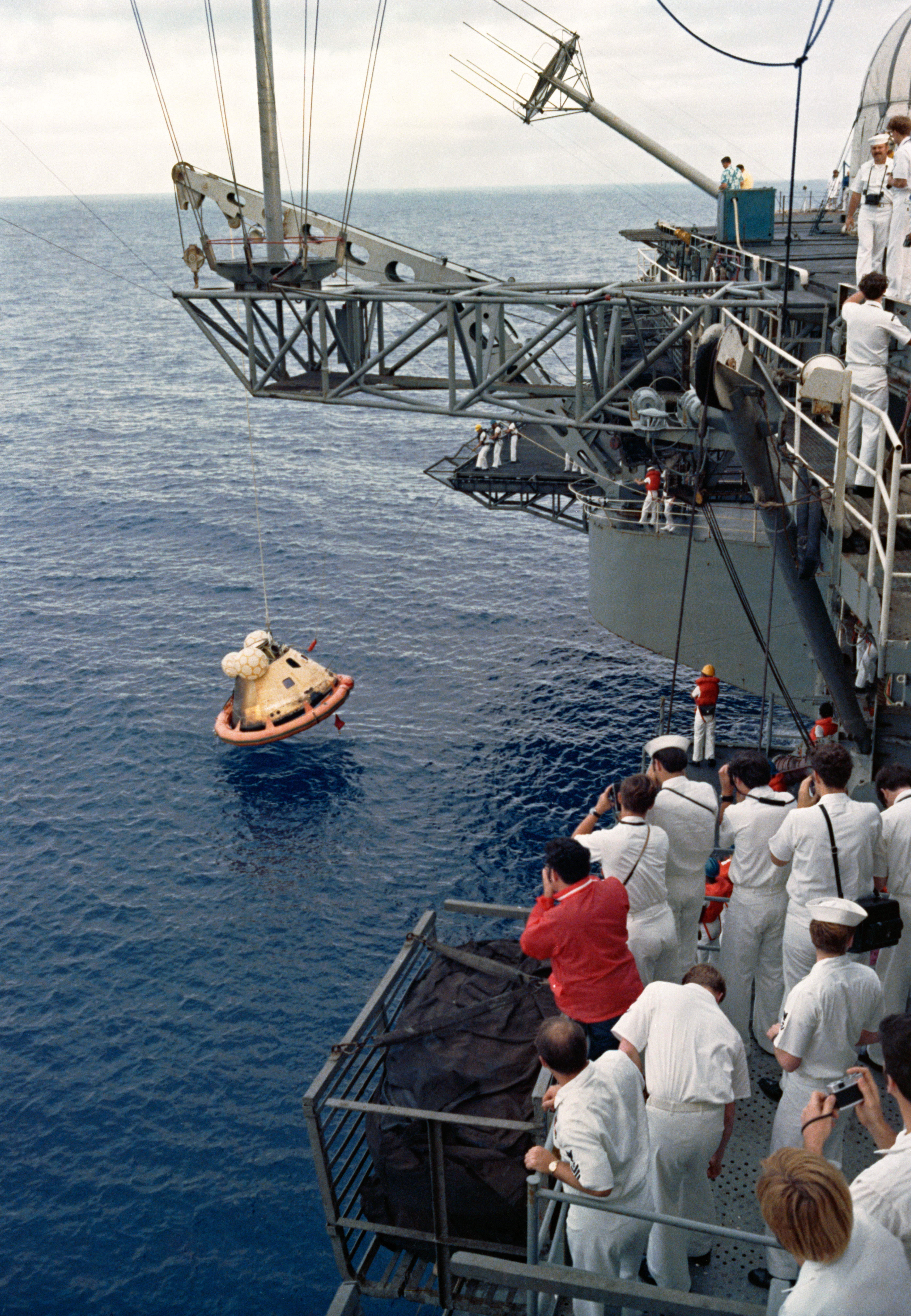
Worden added that Apollo 15 landed on a calm day, which actually exacerbated their problems. “As we released this [fuel],” he recounted, “it went right up into that chute and the chute just dissolved. I think it was probably the first time that it happened in the programme, because I think on every other flight there had been some surface wind that [moved] the spacecraft [during descent]. When they [vented the] rocket fuel, it went off in back of them and they never had a problem. It just got lost in the wind, but with us, coming straight down, this stuff went straight up into the parachute…and there we had a problem. It probably would have gotten into the second chute if we’d been much longer…”
Two years later, the returning crews from the three Skylab space station missions did so after far longer durations in orbit. And Skylab’s first commander, Charles “Pete” Conrad—one of only four astronauts, together with Jim Lovell, Tom Stafford and John Young—to have completed four splashdowns in his career, was adamant that his all-Navy crew of Joe Kerwin and Paul Weitz would walk out of their ship. There would be no “carrying us out on stretchers”, he cautioned.
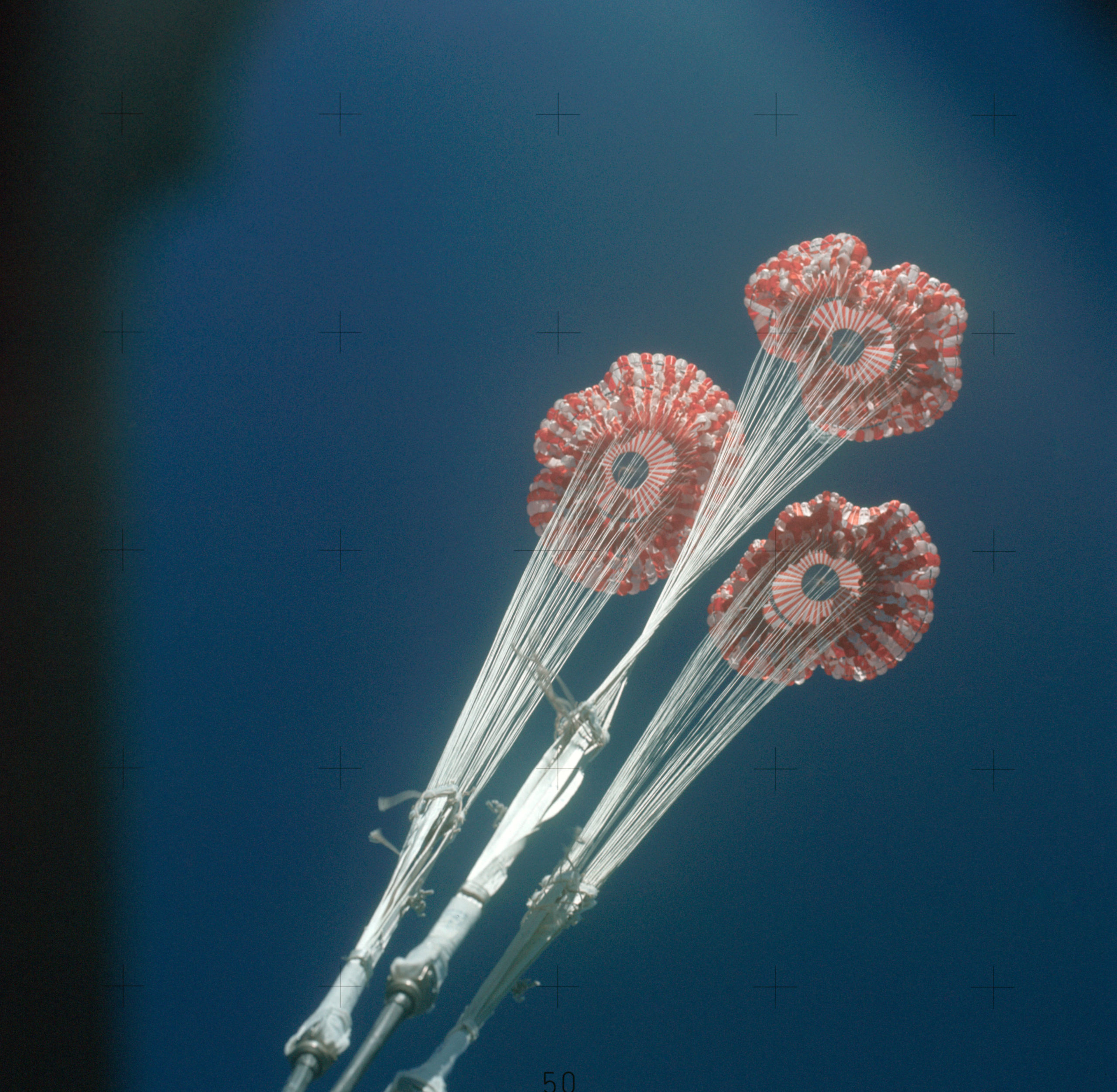
But after their command module hit the water, physician Kerwin advised them to take some fluids and, without further ado, he knocked back some strawberry juice…and quickly made himself seasick. “I should have chug-a-lugged the damn drink with breakfast that morning instead,” he said later, “but I had it on the gently bobbing command module and…I didn’t feel very good!”
The unspoken fear of splashing down in an inverted, “Stable-2” configuration, hanging upside down from their harnesses, also befell the second Skylab crew of Jack Lousma, Owen Garriott and Al Bean upon their return to Earth in September 1973. “Hanging from the ceiling in 1 G was uncomfortable, after two months of weightlessness,” Lousma said later. “The [command module] is not a good boat, either, especially upside down!”
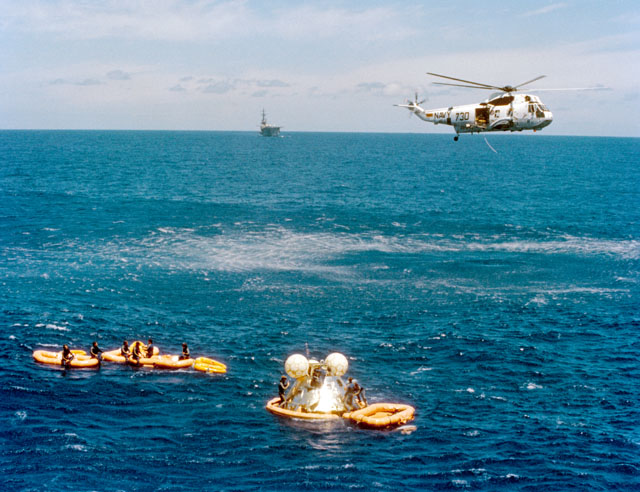
America’s most recent oceanic landing before tomorrow’s return of Doug Hurley and Bob Behnken came on 24 July 1975, when Apollo-Soyuz Test Project (ASTP) crewmen Tom Stafford, Vance Brand and Deke Slayton from a nine-day joint mission with the Soviet Union. But their return to Earth that day went badly wrong. One of Stafford’s tasks was to deactivate the RCS thrusters at an altitude of 15 miles (25 km), after which the parachutes would open, followed by a vent valve to admit fresh air into the cabin.
Neither Stafford or Brand could be entirely sure who did what, but a dynamic re-entry and an irritating squeal in their headsets distracted them. “The noise made it impossible for us to hear each other or Houston,” Stafford wrote in his memoir, We Have Capture. “In order to be heard in the cockpit, we had to shout. Either the noise kept Vance and Deke from hearing me or I was too distracted to give the command.”
The drogue deployed as planned and the vent valve duly opened, but the RCS thrusters continued to sputter. As a consequence, the open valve admitted not fresh air…but a noxious amount of nitrogen tetroxide. As soon as Stafford saw the yellowish-brown mist and smelled its pungent acridity, he knew what it was. And all three of them knew that four hundred parts per million of this stuff could kill them. Quickly, Stafford shut off the RCS valves, cutting the fuel supply, but the damage was already done, as fumes set to work irritating the astronauts’ eyes, burning their faces and searing their noses, mouths and throats. All three men started hacking and choking.
Splashdown was “a real bone-cruncher”, according to Stafford, and as if matters could not get worse, the command module quickly adopted the upside-down “Stable-2” configuration. Brand’s couch was closest to the vent valve and, unsurprisingly, he passed out. Slayton was nauseous and it was Stafford who grabbed oxygen masks and fitted them to his crewmates. “I knew that I had a toxic hypoxia,” he remembered later, “and I started to grunt-breathe to make sure I got pressure in my lungs to keep my head clear.”
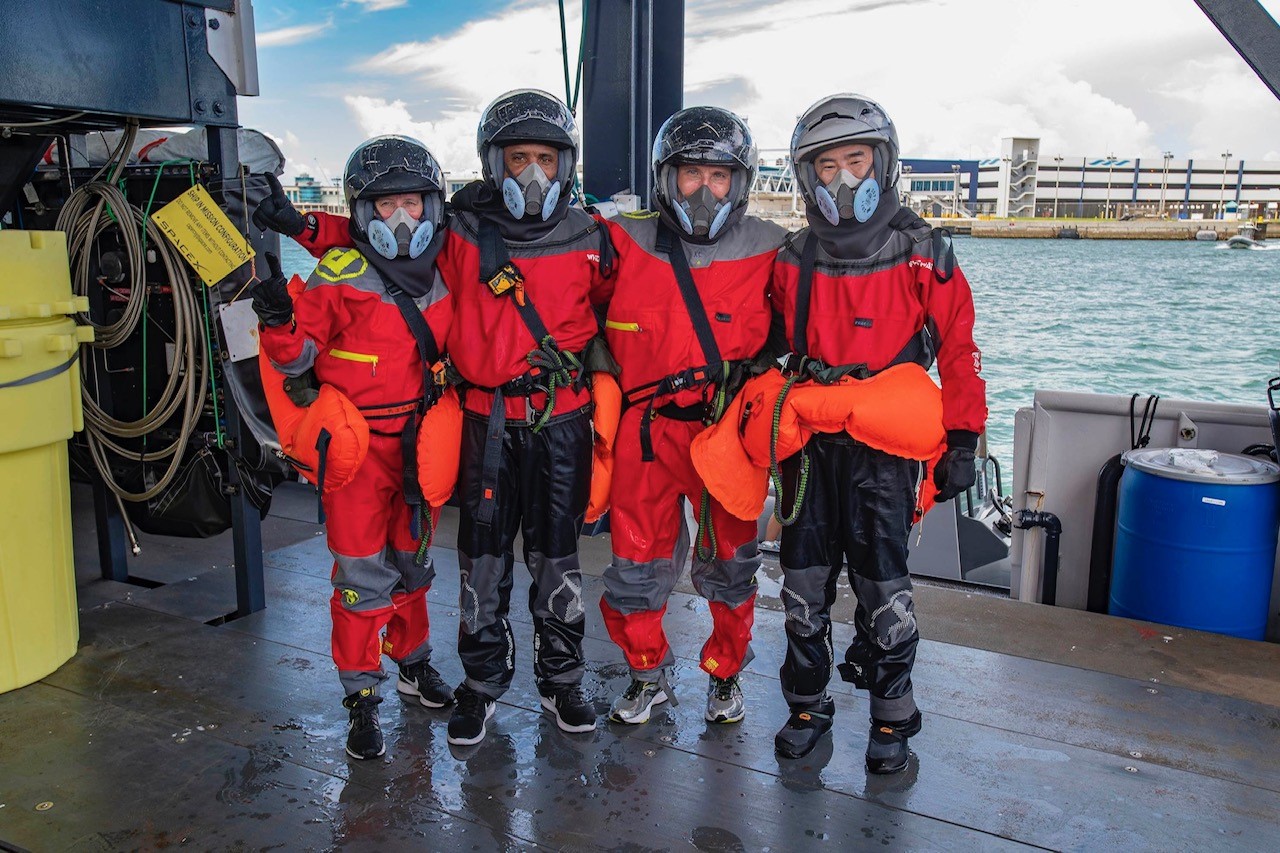
Finally, Stafford fully opened the vent valve and, with a sudden rush of fresh air, the remaining fumes of nitrogen tetroxide dissipated. Not until they were aboard the recovery ship New Orleans and speaking to President Gerald Ford on the telephone did they inadvertently relate what had happened. And as soon as chief flight surgeon Arnauld Nicogossian learned about the nitrogen tetroxide, he had all three astronauts immediately whisked to the medical bay. “The next day,” Stafford wrote, “we saw X-rays and our lungs, where they were completely clear before and right after landing, the next day they were all white!” The last U.S. crew to splash down ended up getting hospitalized for two weeks at the Tripler Army Medical Center in Honolulu.
It was found that each man had inhaled three hundred parts per million of nitrogen tetroxide. Had Stafford not reacted quickly with the oxygen masks, they would have been dead within minutes.
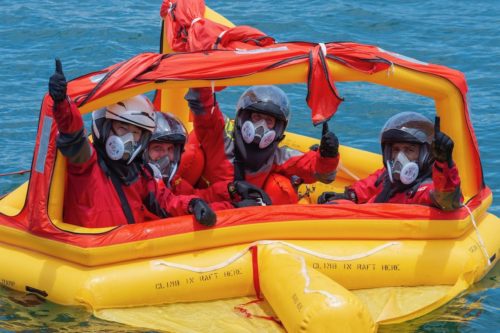
With American astronauts returning to runway landings aboard the Space Shuttle between April 1981 and July 2011, and aboard Russia’s Soyuz spacecraft since May 2003, tomorrow’s return of Hurley and Behnken will be the first oceanic splashdown by American astronauts in just over 45 years.
It is expected to be the first of many, with the next Crew Dragon astronauts—NASA’s Mike Hopkins, Victor Glover and Shannon Walker, together with Soichi Noguchi of the Japan Aerospace Exploration Agency (JAXA)—slated to begin their multi-month tour of the ISS as soon as late September. In images recently tweeted by Noguchi, they recently completed water-survival training for their return to Earth early next year. “SpaceX and Crew-1 completed water egress training at Cape Canaveral this week,” he tweeted. “Splashdown is no problem.”
FOLLOW AmericaSpace on Facebook and Twitter!
Missions » Apollo »



